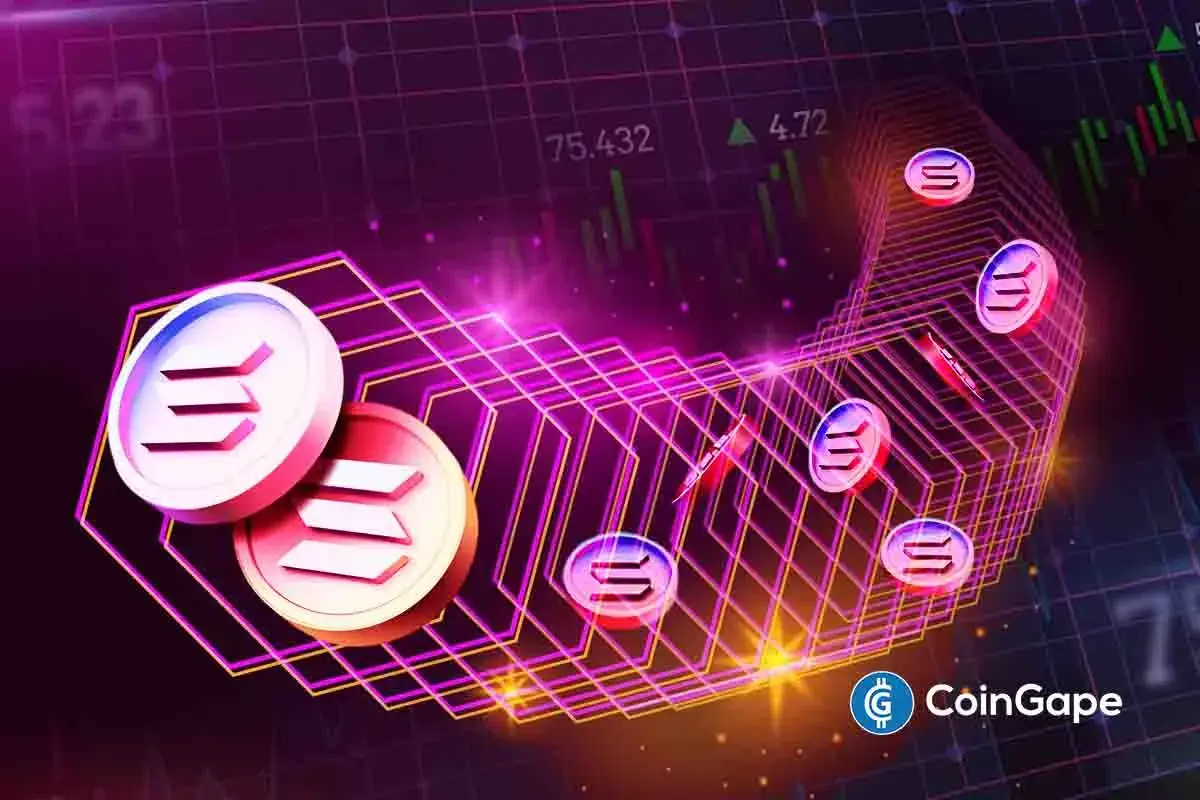Market
Top Crypto News This Week: MATIC Migration, and More

This week is filled with key developments across various crypto ecosystems, including Polygon and Binance, which are expected to impact the market in different ways.
Additionally, a crucial upgrade is scheduled for the Arbitrum Layer-2, alongside a highly anticipated testnet launch on the Fantom network. Traders should be ready to take advantage of the potential market volatility these events might trigger.
MATIC Migrates to POL
On September 4, Polygon will begin the long-awaited upgrade from MATIC to POL. POL will fully replace MATIC, becoming the native gas and staking token for the Polygon Proof-of-Stake (PoS) network. Following this initial phase, POL will play a key role in the network’s AggLayer, subject to community approval.
MATIC holders on Polygon PoS, as well as MATIC stakers and delegators on Ethereum, won’t need to take any action. However, those holding MATIC on Ethereum, Polygon zkEVM, and centralized exchanges may need to migrate.
“POL is an exciting and highly anticipated upgrade, mainly because it further expands the utility of Polygon’s native token to reflect and power the vision of Polygon as an ever-growing network of aggregated blockchains,” the Polygon network shared in a recent blog.
Read more: How To Buy Polygon (MATIC) and Everything You Need To Know
Despite the anticipation for the transition, BeInCrypto data shows MATIC has been down 1.18% since the Monday session opened. Around the due date, however, the token could display some volatility as investors position themselves to capitalize on the hype.
Binance Prepares to Launch Solana Staking
Interest in staking continues to grow, with Binance and other exchanges like Bitget and Bybit recently hinting at launching liquid staking tokens on Solana. This comes as Solana’s liquid staking total value locked (TVL) has surged in 2024, reaching $3.756 billion, up from around $1.9 billion in January, according to DefiLlama.
For Binance, launching Solana staking would signify a new revenue stream with new offerings from the suggested BNSOL symbol. With the BNSOL offering, the platform would be able to collect staking fees while stakers earn rewards or yields.
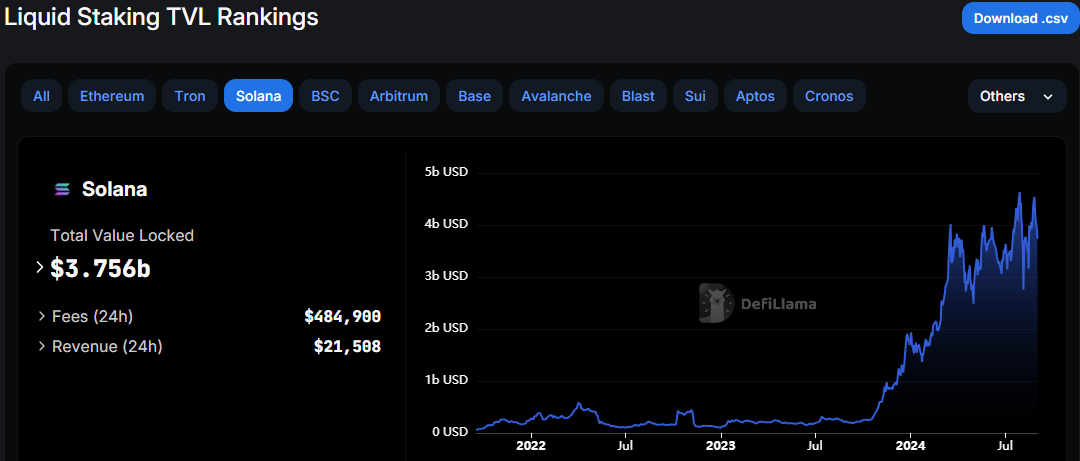
In hindsight, Binance invested in Solayer in early August to drive Solana’s restaking ecosystem. Solayer will help secure on-chain decentralized applications (dApps) with improved network bandwidth while at the same time securing Layer-1 (L1).
The tokens to watch around these events include Binance Coin (BNB) and Solana’s SOL. However, given Binance’s collaboration with Sanctum, a top-five Solana staking layer, CLOUD could also see a lot of volatility.
Sonic Testnet Goes Live
The Fantom Sonic Testnet is set to launch this week, adding to potential market volatility. Sonic is a new Layer-1 blockchain from Fantom Foundation, featuring an L2 bridge to Ethereum. It promises higher transaction speeds, better finality, and reduced storage requirements.
“On October 24, we announced Fantom Sonic and released its testnet environment to the public. The network upgrade will scale Fantom to beyond 2,000 transactions per second with a one-second finality while reducing storage requirements by up to 90%,” Fantom wrote.
Ahead of the testnet, Fantom’s token, FTM, has risen by 3.39%, trading at $0.422.
The testnet participants will have the opportunity to interact with Sonic by submitting transactions, performing swaps, and experiencing the network’s performance firsthand. Ahead of the testnet launch, Fantom’s token, FTM, has risen by 3.39%, trading at $0.422, according to BeInCrypto data.
Arbitrum Upgrade Stylus
Ethereum L2 scaling solution Arbitrum (ARB) will upgrade its Stylus on September 3 to enable writing smart contracts using Rust, C, and C++ coding languages. Notably, Stylus contracts are faster with significantly lower gas fees owing to the superior efficiency of WASM programs.
Arbitrum Nitro’s unique fraud-proving technology enables Stylus. When there is a dispute on an Arbitrum network, Nitro replays the chain’s execution in WASM. Honest Arbitrum validators will then bisect the dispute until a single invalid step is identified and checked on-chain via a “one-step proof.”
Read more: How to Buy Arbitrum (ARB) and Everything You Need to Know
The bottom line is that Stylus innovates on many levels, including but not limited to the fact that it is a single chain but supports multiple languages. Other perks include its multi-virtual machine (multiVM), cheaper execution, being fully interoperable, and providing cheap reentrancy detection.
Immutable Unlocks $41 Million in IMX
On September 6, the circulating supply of IMX will increase by 32.47 million tokens. These newly unlocked coins will be allocated to the development of the project and the broader ecosystem.
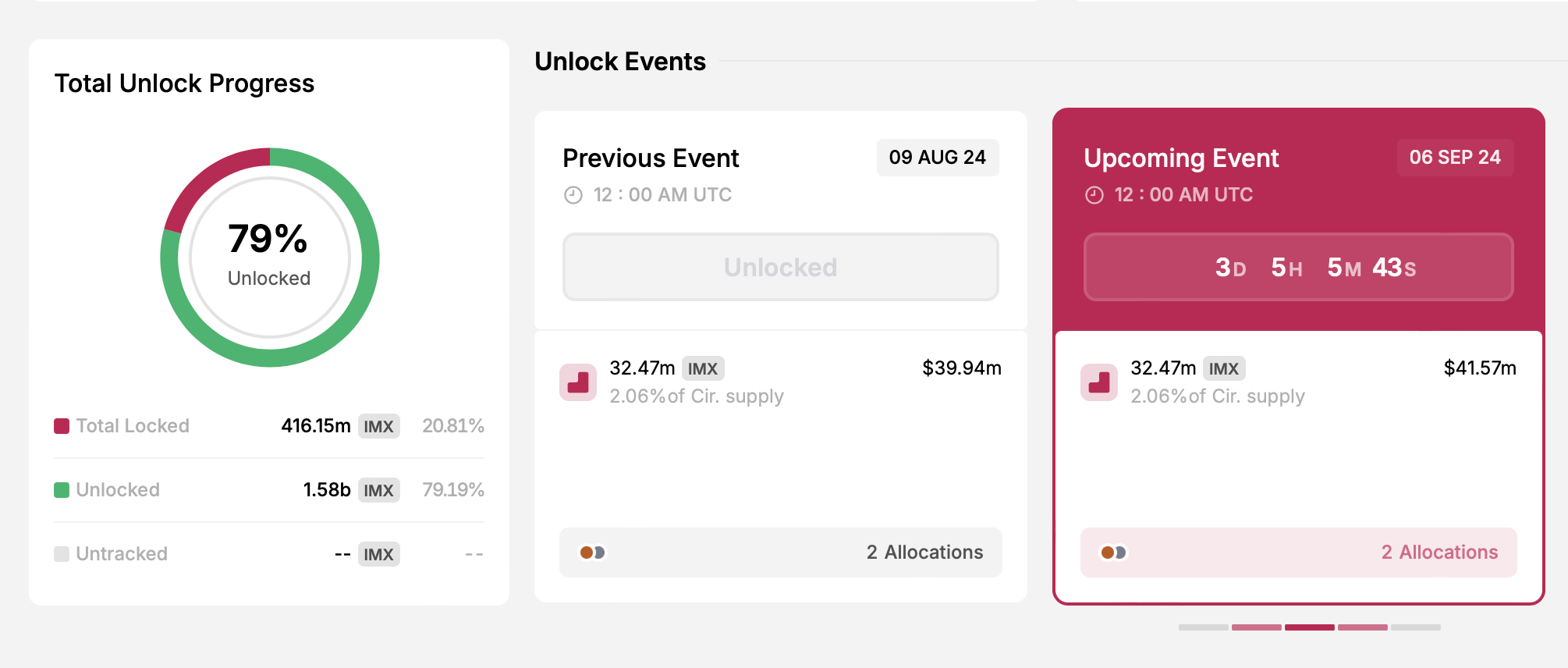
This event will be a cliff unlock, meaning the tokens are released in larger, periodic batches rather than through a gradual, linear schedule. Unlike linear unlocks that provide more price stability, cliff unlocks can lead to increased market liquidity and volatility.
As such, investors should not be surprised if IMX price rallies ahead of the event and dumps on or after the unlock day as enlightened investors trade strategically.
Disclaimer
In adherence to the Trust Project guidelines, BeInCrypto is committed to unbiased, transparent reporting. This news article aims to provide accurate, timely information. However, readers are advised to verify facts independently and consult with a professional before making any decisions based on this content. Please note that our Terms and Conditions, Privacy Policy, and Disclaimers have been updated.
Market
Cardano (ADA) Jumps 4% as Bullish Signals Emerge

Cardano (ADA) is up 4% on Monday, trying to hit $0.65, showing signs of renewed bullish momentum. Technical indicators are beginning to align in favor of buyers, with the BBTrend turning positive for the first time in days and the DMI signaling strengthening upward pressure.
ADA is also nearing a potential golden cross formation on its EMA lines, which could further support a breakout if resistance levels are cleared. With momentum building and key levels in sight, Cardano is entering a critical zone that could define its short-term direction.
Cardano Shows Early Signs of Recovery as BBTrend Turns Positive
Cardano BBTrend has just flipped back into positive territory at 0.11, following four straight days in the negative zone. This shift, though subtle, may be the first sign of momentum stabilizing after recent weakness.
BBTrend, or Bollinger Band Trend, is a technical indicator that gauges the strength and direction of a trend based on how wide or narrow the Bollinger Bands are.
When the bands begin to expand and BBTrend moves into positive values, it often suggests growing volatility in favor of an emerging bullish trend. On the other hand, prolonged negative readings typically signal fading momentum and a lack of directional strength.

While a BBTrend of 0.11 is still low and not yet signaling a strong uptrend, the fact that it turned positive marks a potential inflection point.
It suggests that selling pressure may be fading and the price could be entering a recovery phase if buying activity increases. This early uptick in BBTrend often precedes a broader move.
Traders will likely be watching closely to see if this positive shift is sustained in the coming sessions, as continued gains in BBTrend could indicate the beginning of a more defined upward move for ADA.
Cardano Buyers Regain Control as Uptrend Shows Early Strength
Cardano Directional Movement Index (DMI) is showing a notable shift in momentum, with its Average Directional Index (ADX) climbing to 17.79, up from 13.77 yesterday.
The ADX measures the strength of a trend, regardless of its direction, on a scale from 0 to 100. Values below 20 suggest a weak or non-existent trend, while readings above 25 typically confirm that a trend is gaining strength.
ADA’s ADX is still below the 20 threshold but rising steadily—indicating that momentum is building and a stronger directional move could soon take shape.

Looking deeper, the +DI (positive directional indicator) has jumped to 26.38 from 16.30 just a day ago, signaling increased buying pressure. Although it has slightly pulled back from an earlier peak at 29.57, it remains firmly above the -DI (negative directional indicator), which has dropped significantly from 22.72 to 13.73.
This widening gap between the +DI and -DI suggests a clear shift in favor of bulls, with buyers regaining control after a brief period of selling pressure.
If the ADX continues to rise alongside a dominant +DI, it could confirm a strengthening uptrend for Cardano.
Cardano Nears Golden Cross as Bulls Eye Breakout—but Key Support Still in Play
Cardano price is approaching a potentially bullish technical development, as its EMA lines suggest a golden cross may form in the coming sessions.
A golden cross occurs when the short-term moving average crosses above the long-term moving average, often signaling the start of a stronger uptrend.
If this crossover is confirmed and ADA manages to break above the resistance at $0.668, the next upside targets sit at $0.709 and $0.77—levels not seen since late March.
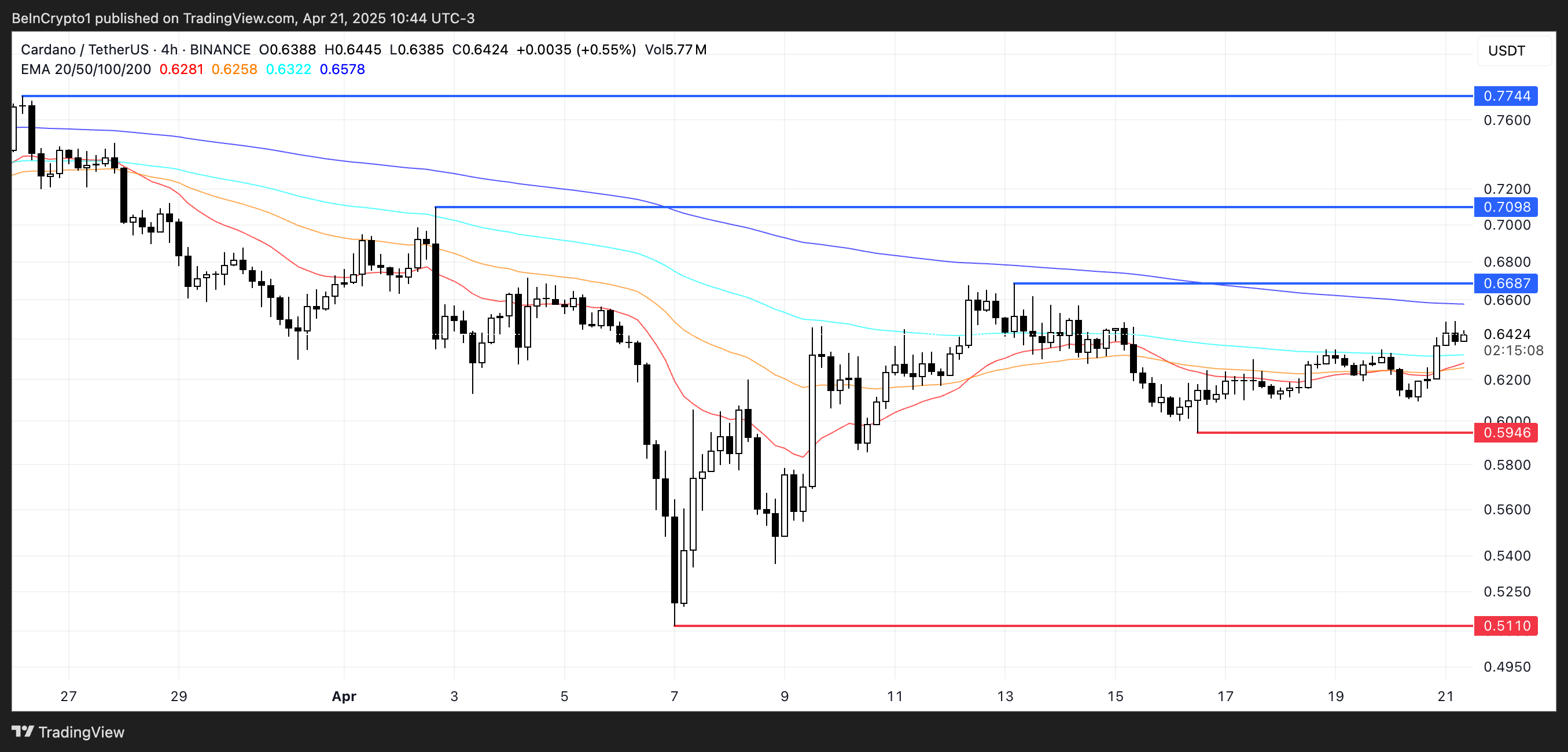
However, if ADA fails to maintain its upward trajectory and the momentum fades, downside risks remain in play.
A drop back toward the $0.594 support would be the first sign of weakness, and a breakdown below that level could expose the asset to deeper losses, with $0.511 as the next key support zone.
Price action around the $0.668 resistance will likely be the deciding factor.
Disclaimer
In line with the Trust Project guidelines, this price analysis article is for informational purposes only and should not be considered financial or investment advice. BeInCrypto is committed to accurate, unbiased reporting, but market conditions are subject to change without notice. Always conduct your own research and consult with a professional before making any financial decisions. Please note that our Terms and Conditions, Privacy Policy, and Disclaimers have been updated.
Market
Bitcoin ETFs Dominate Market Despite 72 Altcoin Proposals
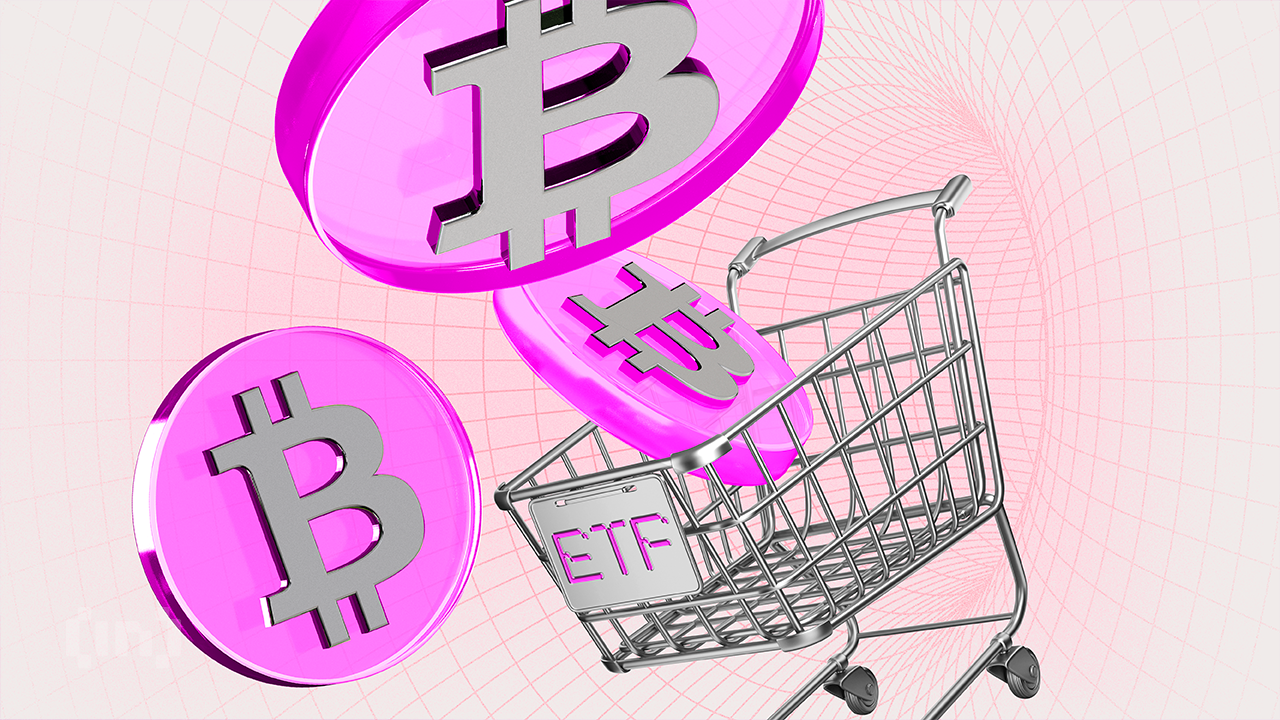
As the SEC is signaling its willingness to approve new altcoin ETFs, 72 active proposals are awaiting a nod. Despite the growing interest from asset managers to launch more altcoin-based products in the institutional market, Bitcoin ETFs currently command 90% of crypto fund assets worldwide.
New listings can attract inflows and liquidity in these tokens, as demonstrated by Ethereum’s approval of ETF options. Still, given the current market interest, it’s highly unlikely that any crypto found will replicate Bitcoin’s runaway success in the ETF market
Bitcoin Dominates the ETF Market
Bitcoin ETFs dramatically changed the global digital assets market over the past month, and they are performing quite well at the moment. In the US, total net assets have reached $94.5 billion, despite continuous outflows in the past few months.
Their impressive early success opened a new market for crypto-related assets, and issuers have been flooding the SEC with new applications since.
This flood has been so intense that there are currently 72 active proposals for the SEC’s consideration:
“There are now 72 crypto-related ETFs sitting with the SEC awaiting approval to list or list options. Everything from XRP, Litecoin and Solana to Penguins, Doge and 2x MELANIA and everything in between. Gonna be a wild year,” claimed ETF analyst Eric Balchunas.
The US regulatory environment has become much friendlier toward crypto, and the SEC is signaling its willingness to approve new products. Many ETF issuers are attempting to seize the opportunity to create a product as successful as Bitcoin.
However, Bitcoin has a sizable head start, and it’s difficult to imagine any newcomer disrupting its 90% market share.
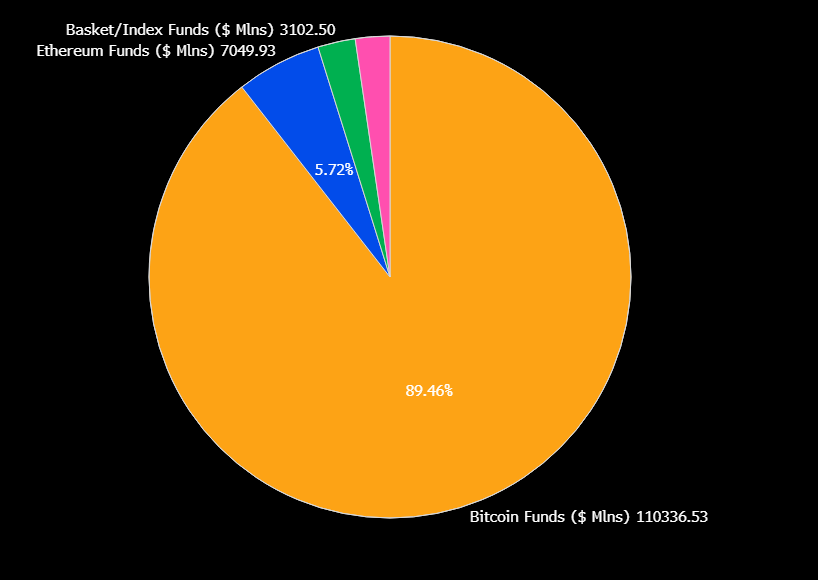
To put that into perspective, BlackRock’s Bitcoin ETF was declared “the greatest launch in ETF history.” Any new altcoin product would need a significant value-add to encroach upon Bitcoin’s position.
Recent products like Ethereum ETF options have attracted fresh liquidity. Yet, Bitcoin’s dominance in the institutional market remains unchanged.
Of these 72 proposals, only 23 refer to altcoins other than Solana, XRP, or Litecoin, and many more concern new derivatives on existing ETFs.
Some analysts claim that these products, taken together, couldn’t displace more than 5-10% of Bitcoin’s ETF market dominance. If an event significantly disrupted Bitcoin, it would also impact the rest of crypto.
Still, that doesn’t mean that the altcoins ETFs are a futile endeavor. These products have continually created new inflows and interest in their underlying assets, especially with issuers acquiring token stockpiles.
However, it’s important to be realistic. While XRP and Solana ETF approvals could drive new bullish cycles for the altcoin market, Bitcoin will likely dominate the ETF market by a large margin — given its widespread recognition as a ‘store of value’.
Disclaimer
In adherence to the Trust Project guidelines, BeInCrypto is committed to unbiased, transparent reporting. This news article aims to provide accurate, timely information. However, readers are advised to verify facts independently and consult with a professional before making any decisions based on this content. Please note that our Terms and Conditions, Privacy Policy, and Disclaimers have been updated.
Market
Coinbase Lists RSR, Atkins Association Fuels Bullishness

Coinbase is listing Reserve Rights (RSR), a dual‑token stablecoin platform aimed at creating a collateral‑backed, self‑regulating stablecoin ecosystem. Following the announcement, Binance’s ‘smart money’ traders are increasing long positions on the altcoin.
Incoming SEC Chair Paul Atkins was an early advisor for RSR, but he doesn’t maintain any active connection to the project. Nonetheless, RSR speculators may be anticipating some benefits from this old association.
Coinbase Lists RSR To New Enthusiasm
RSR has been active since 2019, aiming to upend the stablecoin ecosystem. It’s an ERC‑20 utility and governance token that underpins the Reserve Protocol, a dual‑token system designed to back and stabilize the Reserve stablecoin (RSV) at a $1 USD peg. RSR, a non-stablecoin, provides governance and backstop insurance to its counterpart.
The asset’s valuation peaked in 2021 but has been quiet since then until regaining prominence in 2024. Today’s Coinbase listing announcement saw RSR jump nearly 10%.
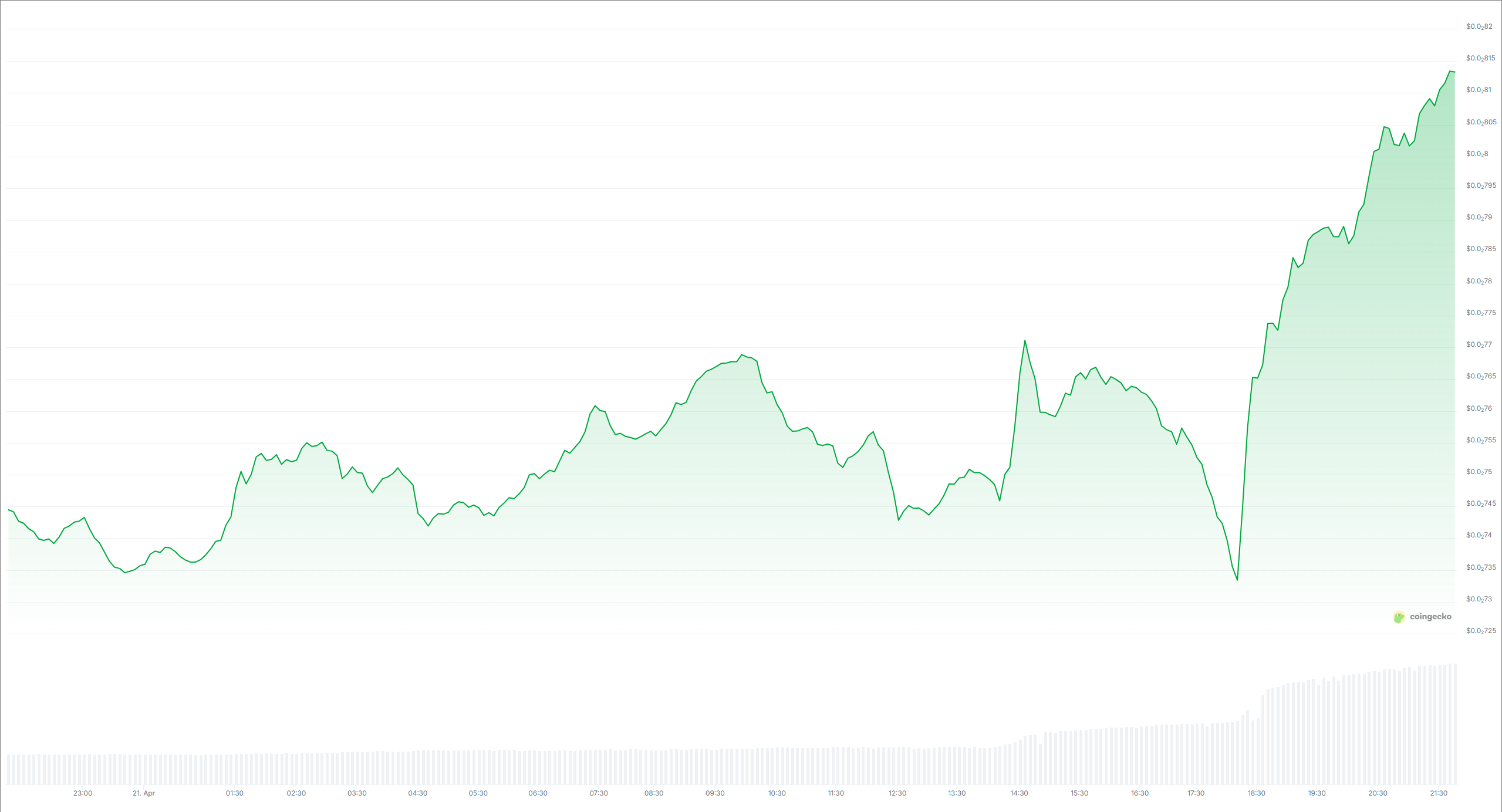
Coinbase first announced that it would list RSR a little under three weeks ago. Coinbase listings usually cause the underlying tokens to spike, and this has been no exception.
However, an intriguing side effect has also taken place. As the asset prepares its debut on Coinbase, top traders on Binance are showing a strong bullish positioning.

On Binance, the top‑trader long/short ratio measures the share of total open positions held as longs by the top 20% of accounts by margin balance. A 65.48% long ratio means these “smart money” participants are overwhelmingly betting prices will rise.
Meanwhile, beyond Coinbase listing, RSR is getting attention due to its link with incoming SEC Chair Paul Atkins. Although Atkins disclosed his crypto investments and has no current link with RSR, he joined the Reserve Rights Foundation as an advisor in its early stages.
Since Atkins succeeded in his confirmation hearing, RSR posted an impressive 22% rally. Technically, he hasn’t been seated as Chair yet, but traders are evidently expecting bullish developments.
Atkins has promised to bring crypto-friendly reform, and this connection could disproportionately impact his former associates.
That isn’t to say that anyone has alleged that Atkins will engage in corruption to unfairly boost RSR. However, since becoming President, members of Trump’s family have been involved in several controversial crypto deals. This precedent may be encouraging traders to believe in the importance of political connections.
For now, market narratives are very important in this industry. As Atkins officially begins his career as the SEC’s new Chair, RSR may continue to receive indirect benefits.
Disclaimer
In adherence to the Trust Project guidelines, BeInCrypto is committed to unbiased, transparent reporting. This news article aims to provide accurate, timely information. However, readers are advised to verify facts independently and consult with a professional before making any decisions based on this content. Please note that our Terms and Conditions, Privacy Policy, and Disclaimers have been updated.
-

 Bitcoin17 hours ago
Bitcoin17 hours agoUS Economic Indicators to Watch & Potential Impact on Bitcoin
-

 Bitcoin23 hours ago
Bitcoin23 hours agoHere Are The Bitcoin Levels To Watch For The Short Term
-

 Market20 hours ago
Market20 hours agoBitcoin Price Breakout In Progress—Momentum Builds Above Resistance
-
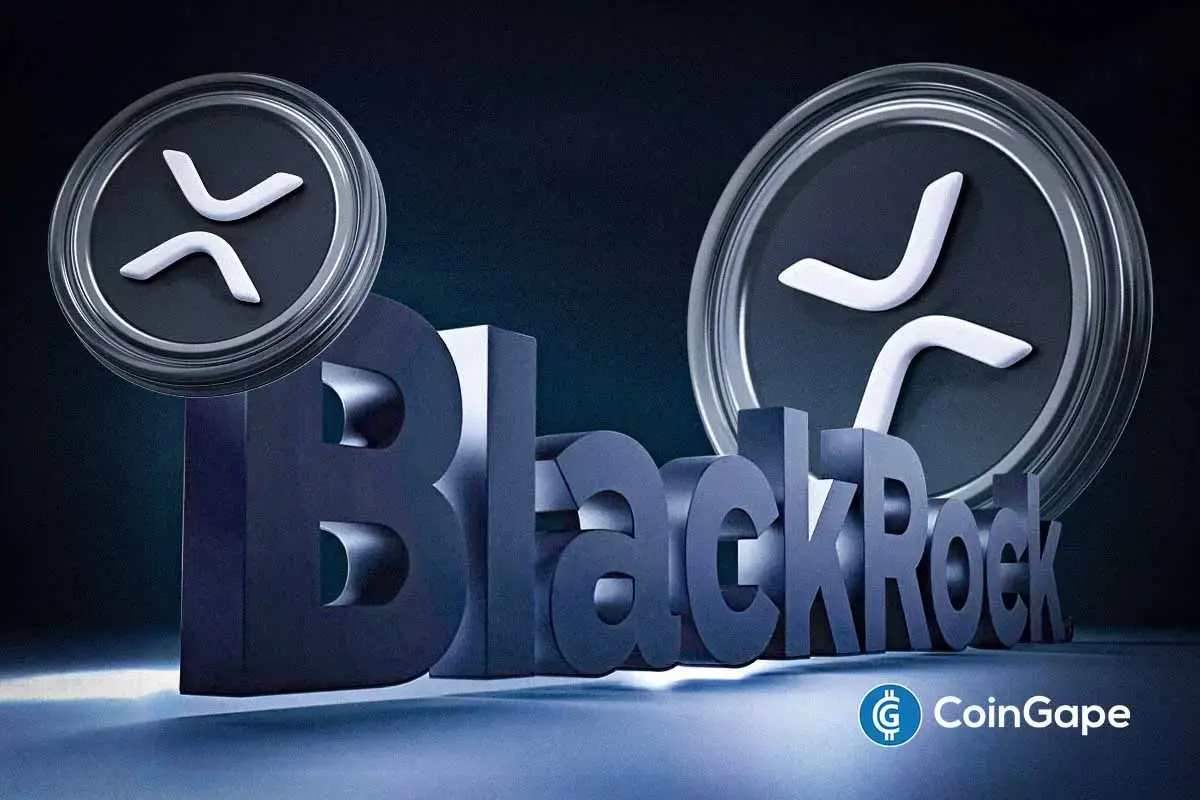
 Altcoin15 hours ago
Altcoin15 hours agoExpert Reveals Why BlackRock Hasn’t Pushed for an XRP ETF
-

 Altcoin20 hours ago
Altcoin20 hours agoExpert Says Solana Price To $2,000 Is Within Reach, Here’s How
-

 Market18 hours ago
Market18 hours agoSolana Rallies Past Bitcoin—Momentum Tilts In Favor of SOL
-

 Market17 hours ago
Market17 hours agoVitalik Buterin Proposes to Replace EVM with RISC-V
-

 Bitcoin15 hours ago
Bitcoin15 hours agoSolana, Bitcoin in Texas, and Initia




